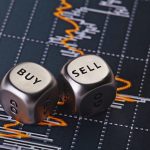For newcomers to foreign exchange trading, terms like margin and leverage can seem overwhelming at first. However, these concepts are fundamental to forex trading and, when properly understood, can be powerful tools in a trader's arsenal. Let's dive deep into these essential concepts and explore how they work in practice.
Understanding Margin in Forex
Think of margin as a good faith deposit that you need to put up to open and maintain trading positions. When you hear traders talk about margin in forex, they're referring to the amount of money required in your account to open a position. It's essentially collateral that your broker holds to ensure you can cover potential losses.
For example, if your broker requires a 1% margin, you would need $1,000 in your account to control a position worth $100,000. This might sound like a fantastic deal, but it's important to remember that while margins make trading more accessible, they also amplify both potential gains and losses.
Many traders, especially beginners, make the mistake of viewing margin as a transaction cost. It's not. The margin is simply set aside by your broker and becomes available again once you close your position. Think of it as a security deposit on an apartment – you get it back when you move out, assuming everything is in order.
The Power and Peril of Forex Leverage
Forex leverage is what makes it possible to control large positions with relatively small amounts of capital. When people talk about forex being highly leveraged, they're referring to the ability to control significant amounts of money with a minimal initial investment.
Let's break this down with a practical example. If your broker offers 100:1 leverage, you can control $100,000 in currency with just $1,000 in your account. This level of forex leverage is what makes the foreign exchange market so attractive to traders with limited capital. However, it's crucial to understand that leverage is a double-edged sword.
Consider this scenario: You open a $100,000 position with $1,000 margin using 100:1 leverage. If the market moves 1% in your favor, you've doubled your money. Sounds great, right? But if the market moves 1% against you, you've lost your entire margin. This is why experienced traders often say that leverage can be both your best friend and worst enemy.
Risk Management: The Key to Survival
The relationship between margin and leverage requires careful balance and robust risk management strategies. Here are some essential principles to keep in mind:
Never risk more than you can afford to lose. This might sound obvious, but leverage can make it tempting to take oversized positions. Just because you can open a large position doesn't mean you should.
Monitor your margin level closely. Most brokers will send margin calls when your account equity falls below certain thresholds, but don't rely on this. Keep track of your positions and available margin at all times.
Use stop-loss orders religiously. With leveraged positions, market movements can quickly deplete your account. Stop-loss orders help protect you from catastrophic losses.
Start small and scale gradually. Many successful traders begin with lower leverage ratios until they gain experience and confidence in their trading strategy.
Consider the swap costs. When holding leveraged positions overnight, interest rate differentials between currencies can affect your profits or losses through swap rates.
The Psychology of Trading with Leverage
Perhaps the most challenging aspect of trading with leverage is psychological. The potential for large gains can cloud judgment and lead to emotional decision-making. It's essential to maintain discipline and stick to your trading plan, regardless of whether you're winning or losing.
Remember that professional traders often use much lower leverage than what's available to them. While your broker might offer 500:1 leverage, many successful traders operate with effective leverage ratios of 10:1 or less. They understand that longevity in the market is more important than making quick profits.
Moving Forward with Confidence
Understanding margin and leverage is crucial for anyone serious about forex trading. While these tools can amplify your trading power, they require respect and careful management. Start with conservative positions, focus on learning proper risk management, and gradually increase your exposure as you gain experience and confidence.
Remember that successful trading is not about making spectacular gains in a single trade but about consistent performance over time. By understanding and properly managing margin and leverage, you'll be better equipped to navigate the forex market's challenges and opportunities.














